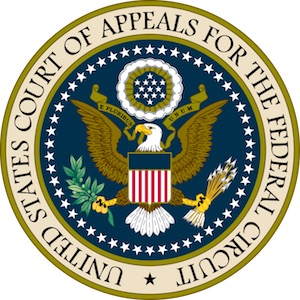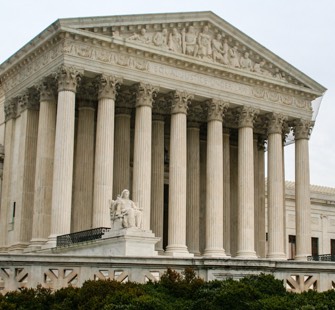Burden of persuasion on Petitioner for IPR amendments
 On October 4, 2017, the United States Court of Appeals for the Federal Circuit issued its much-anticipated decision in Aqua Products, Inc. v. Matal, addressing en banc whether the patent owner has the burden of proving patentability with respect to submitted amended claims during an inter partes review (IPR) proceeding. Previous panels of the Federal Circuit had ruled that the burden of persuasion to demonstrate patentability was with the patent owner, not with the challenger. Sitting en banc, the Federal Circuit issued a narrow ruling saying that the burden of persuasion must remain at all times on the petitioner, including with respect to demonstration of unpatentability of amended claims.
On October 4, 2017, the United States Court of Appeals for the Federal Circuit issued its much-anticipated decision in Aqua Products, Inc. v. Matal, addressing en banc whether the patent owner has the burden of proving patentability with respect to submitted amended claims during an inter partes review (IPR) proceeding. Previous panels of the Federal Circuit had ruled that the burden of persuasion to demonstrate patentability was with the patent owner, not with the challenger. Sitting en banc, the Federal Circuit issued a narrow ruling saying that the burden of persuasion must remain at all times on the petitioner, including with respect to demonstration of unpatentability of amended claims.
The ruling of the court was described to be “narrow” by Judge O’Malley, who wrote for the majority in announcing the limited decision. There was no consensus among the Judges with respect to the judgment that should be reached and the rationale that should be employed, which meant very little of what was actually written in the five opinions and some 135 pages was actually precedential. This lack of consensus would explain why it took the Federal Circuit ten months after the oral arguments in this case to issue a decision.
Federal Circuit reverses PTAB, says Whirlpool claims are anticipated
 The U.S. Court of Appeals for the Federal Circuit recently issued a decision in Homeland Housewares, LLC v. Whirlpool Corporation. The original panel voted 2-1 in favor of Homeland Housewares and overturned a final written decision of the Patent Trial and Appeal Board (PTAB), which had confirmed that challenged claims from a Whirlpool patent were valid.
The U.S. Court of Appeals for the Federal Circuit recently issued a decision in Homeland Housewares, LLC v. Whirlpool Corporation. The original panel voted 2-1 in favor of Homeland Housewares and overturned a final written decision of the Patent Trial and Appeal Board (PTAB), which had confirmed that challenged claims from a Whirlpool patent were valid.
The Whirlpool patent before the Federal Circuit, which had the validity of the claims upheld at PTAB, is U.S. Patent No. 7581688, titled Blender with Crushed Ice Functionality. The ‘688 patent claims a cycle of operation for a blender having a motor, a container and a cutter assembly in which the motor automatically controls the cutter assembly’s rotational speed to effect a pulsing, each pulse having a constant speed phase, a deceleration phase and an acceleration phase. The resulting invention addressed shortcomings in conventional blender devices with a crushed ice functionality as those other prior art devices would often result in ice that was either over or under crushed. Further, conventional devices had difficulties mixing crushed ice with other contents to an even consistency.
08.28.17 | CAFC, Federal Circuit Cases, Inter Partes Review, Patent Issues | Gene Quinn
SCOTUS takes IPR constitutionality challenge in Oil States
 To the surprise of many, the United States Supreme Court has granted certiorari in Oil States vs. Greene’s Energy Group, et al. From a substantive standpoint, this dispute is between the parties to an inter partes review (IPR) proceeding conducted by the Patent Trial and Appeal Board (PTAB). By taking this case, the Supreme Court will address the constitutionality of having an Article I tribunal extinguish patent rights under the post grant proceedings created by the America Invents Act (AIA).
To the surprise of many, the United States Supreme Court has granted certiorari in Oil States vs. Greene’s Energy Group, et al. From a substantive standpoint, this dispute is between the parties to an inter partes review (IPR) proceeding conducted by the Patent Trial and Appeal Board (PTAB). By taking this case, the Supreme Court will address the constitutionality of having an Article I tribunal extinguish patent rights under the post grant proceedings created by the America Invents Act (AIA).
The Supreme Court granted certiorari only on the first question presented: “Whether inter partes review – an adversarial process used by the Patent and Trademark Office (PTO) to analyze the validity of existing patents – violates the Constitution by extinguishing private property rights through a non-Article III forum without a jury.”
The grant of certiorari in this case is particularly noteworthy given that the United States was asked by the Supreme Court for its views and opined in its brief that the petition should be denied.
The argument that inter partes review is unconstitutional can be traced back all the way to 1898 when the Supreme Court issued its decision in McCormick Harvesting Mach. Co. v. Aultman & Co., 169 U.S. 606 (1898). In that case, the Supreme Court held that once a patent is granted, it “is not subject to be revoked or canceled by the president, or any other officer of the Government” because “[i]t has become the property of the patentee, and as such is entitled to the same legal protection as other property.”
The phrasing of the question taken by the Supreme Court could be quite telling. Over the last several years, 8 of the 9 Supreme Court Justices have signed on to an opinion that has recognized that a patent confers either an exclusive or valuable property right. Thus, it would hardly seem a stretch to suggest that the Court, or at least the required four Justices necessary to take a case, have some reason to suspect that the extinguishing of a exclusive, valuable property through a non-Article III forum without a jury violates the Constitution.
While many will undoubtedly have varied opinions as to the importance of this decision by the Court to take this case, the truth is that any decision by the Supreme Court in Oil States simply cannot make things any worse for patent owners. The PTO already considers patents to be a public right, and post grant challenges, particularly inter partes review and covered business method review, are killing patent claims at exceptionally high rates.
This case will be argued during the October 2017 term, with a decision by the end of June 2018. In the coming months there will be much more analysis as the party briefs and amici are filed. Stay tuned.
For instant industry reaction please see: Industry Reaction to SCOTUS Granting Cert. in Oil States.
06.22.17 | Inter Partes Review, Patent Issues, posts, Supreme Court Cases | Gene Quinn
PTAB institutes 6 IPRs challenging RESTASIS patents
 The Patent Trial and Appeal Board (PTAB) of the United States Patent and Trademark Office (USPTO) recently instituted six separate inter partes reviews (IPRs) against patents owned by Allergan plc (NYSE: AGN), which cover RESTASIS® (Cyclosporine Ophthalmic Emulsion) 0.05%. RESTASIS® is an eye drop that helps increase the eyes’ natural ability to make tears. Mylan Pharmaceutical Inc. says they expect PTAB decisions on the IPRs sometime during the fourth quarter of 2017.
The Patent Trial and Appeal Board (PTAB) of the United States Patent and Trademark Office (USPTO) recently instituted six separate inter partes reviews (IPRs) against patents owned by Allergan plc (NYSE: AGN), which cover RESTASIS® (Cyclosporine Ophthalmic Emulsion) 0.05%. RESTASIS® is an eye drop that helps increase the eyes’ natural ability to make tears. Mylan Pharmaceutical Inc. says they expect PTAB decisions on the IPRs sometime during the fourth quarter of 2017.
All the challenged patents are set to expire on August 27, 2024 and are listed in FDA’s Orange Guide. The patents being challenged are U.S. Patent Nos. 8,629,111 (the “‘111 patent”), 8,633,162 (the “‘162 patent”), 8,642,556 (the “‘556 patent”), 8,648,048 (the “‘048 patent”), 8,685,930 (the “‘930 patent”), and 9,248,191 (the “‘191 patent”). Hatch-Waxman litigations involving these patents against Mylan and other generic defendants remain pending in the United States District Court for the Eastern District of Texas.
12.21.16 | Inter Partes Review, Patent Issues | Gene Quinn
The Industry Reacts to Cuozzo Speed Technologies v. Lee
 On June 20th, the U.S. Supreme Court handed down a decision in Cuozzo Speed Technologies, LLC v. Lee, which may not have wide-reaching implications on the U.S. patent landscape but will nonetheless be troubling to patent owners. In a unanimous 8-0 decision, the court upheld the ability of the Patent Trial and Appeal Board (PTAB) to apply the broadest reasonable interpretation (BRI) of patent claims during an inter partes review (IPR) proceeding. It also declared that PTAB’s use of the IPR system was not judicially reviewable.
On June 20th, the U.S. Supreme Court handed down a decision in Cuozzo Speed Technologies, LLC v. Lee, which may not have wide-reaching implications on the U.S. patent landscape but will nonetheless be troubling to patent owners. In a unanimous 8-0 decision, the court upheld the ability of the Patent Trial and Appeal Board (PTAB) to apply the broadest reasonable interpretation (BRI) of patent claims during an inter partes review (IPR) proceeding. It also declared that PTAB’s use of the IPR system was not judicially reviewable.
“This is obviously a victory for some who challenge a patent’s validity in IPR proceedings since broadly construed claims are more vulnerable to attack than narrowly construed claims,” remarked Scott Daniels, partner at Westerman Hattori Daniels & Adrian, LLP. “Still, the great majority of IPR decisions do not turn on claim construction and for those cases Cuozzo simply makes no difference.”
06.30.16 | Inter Partes Review, Patent Issues, Supreme Court Cases, USPTO | Gene Quinn


No Comments
10.10.17 | CAFC, Federal Circuit Cases, Inter Partes Review, Patent Issues, USPTO | Gene Quinn